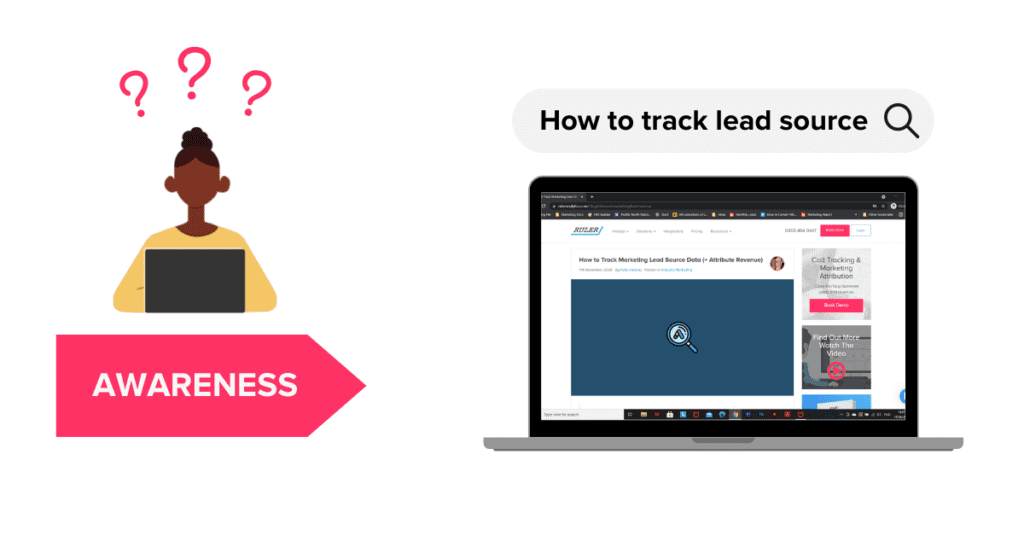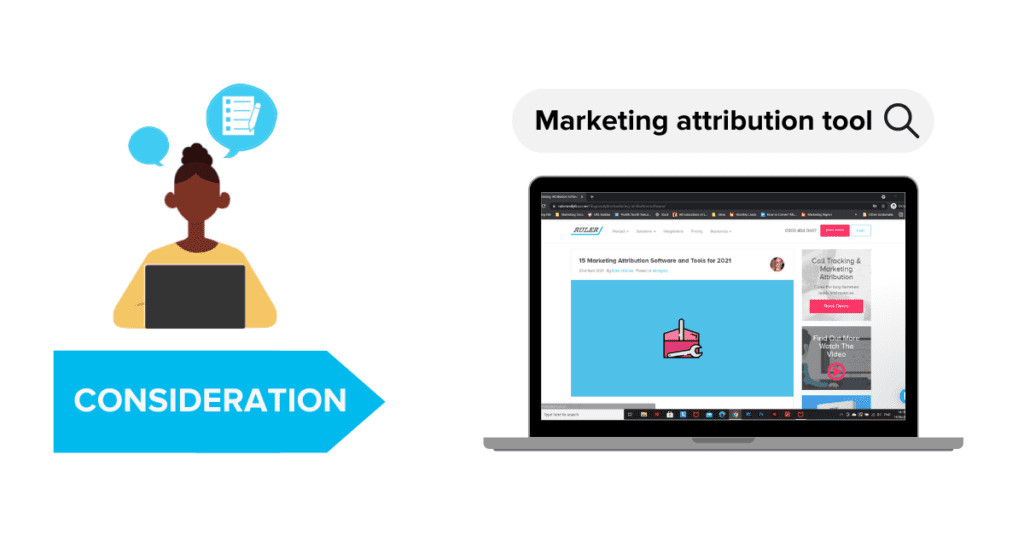Looking to better understand the path to purchase and how you can use it to optimise your marketing? This blog will take you through path to purchase plus how to track it and get better results.
The path a user takes from their first visit to your website to purchase can be long. As more marketing channels emerge, customer journeys get more and more complicated.
Related: Complete guide to marketing touchpoints and how to track them
This ever-increasing complexity between first and last touch makes tracking the path to purchase more difficult for marketers. Given all the channels, campaigns, ads, creative and more, you’re left with a data headache trying to connect the dots.
In this blog, we’ll go through:
Sound good? Let’s get started.
⚡️ Pro Tip
Want to learn more about tracking anonymous visitors on your website and connecting them to leads in your CRM?
Learn how to view full customer journeys and track every touchpoint.
The path to purchase is the journey a user takes across channels and campaigns to convert from a prospect into a customer.
It can also be called the customer journey and generally consists of 3 main stages: the awareness stage, the consideration stage and the decision stage.

Related: Guide to tracking customer journey stages
While each of these stages are separate parts of the overall customer journey, each could be made up of tens or hundreds of individual touchpoints.
🔗 Want to learn more? Follow Laura on LinkedIn to keep up to date with tips and tricks on tracking your pipeline and marketing analytics
Path to purchase, or the customer journey is made up of three distinct stages: the awareness stage, the consideration stage and the decision stage.
We break them down like this.
The awareness stage is where a user becomes aware of a solution to a particular problem they’re having. Let’s use Ruler Analytics customers as an example.
For the awareness stage, we would expect to see marketers searching terms like, ‘how to track my leads, or ‘how to track lead source’.
If we’re doing our job, we would come up in search results for queries like these and provide marketing attribution as a valid solution to that problem.
This is the awareness stage.

In this stage, the user knows what the solution is but they’re considering and evaluating multiple options.
To continue our example, our marketer knows they need a marketing attribution solution. So, they search things like ‘best marketing attribution tools’.
Again, we would want to be found in this search (whether on our own content or featured in others).
This is the consideration stage.

Once the user is happy with their final choice, they will take the plunge and purchase.
This is the final stage of the funnel. You could encourage these actions using review sites for example.

Of course, this is a simplified version of what really happens.
Especially for businesses that need to generate leads first, there are probably intermediary stages as they book a demo and become a lead etc.
Generally speaking though, these three stages sum up the path to purchase.
The issue with your path to purchase is that it can be made of so many individual touchpoints.
All of these moments are opportunities for you to gain (and retain) customers.
Understanding the path to purchase is essential to getting the most out of your marketing.
🚀 Pro Tip
Take a deep dive into tracking customer touchpoints with our complete guide.
Tracking the path to purchase – both holistically and on a granular level – will help you understand how your marketing drives new leads and sales.
With proper tracking in place, you can understand the role your channels and campaigns play when it comes to starting, driving or ending customer journeys.
Book a demo of Ruler Analytics to see how marketing attribution helps you track your path to purchase
We know that users don’t land on your website and convert right away. So, by tracking your paths to purchase, you can see what exactly is working to impact your bottom line.
Related: How Ruler can help you optimise your marketing strategy
There are a few key reasons why the path to purchase is tricky to track. We’ve broken it down into 3 key reasons.
The path to purchase isn’t a simple, short customer journey. There are three stages just to convert a user into a customer. And each of those stages could have tens or maybe even hundreds of touchpoints.
With all this data in play, it makes it difficult for marketers to properly assess what’s working and what isn’t.
As if long customer journeys weren’t difficult enough, marketers have extra challenges who have to drive leads.
If you’re using conversion types like phone calls, live chat or form fills, then you might struggle to track lead quality. In fact, you might even struggle to track lead volume.
Related: Learn how to track calls, track form submissions and track live chat with our simple guides.
While you might be able to count the number of leads you’re generating, how do you accurately attribute them to their referring marketing source? And, even worse, if a lead converts into a sale, how do you attribute that closed revenue back to your marketing?
When there are so many channels in play during your paths to purchase, it can be hard to sift through the data to make concrete connections between sales and marketing.
Many ad platforms opt for last-click attribution models meaning those channels used later in the customer journey or path to purchase get all of the credit.
When we consider how many touchpoints are required to drive users down the path to purchase, this isn’t a fair attribution model to use.
While last-click can be a great model type to use to get an idea of how channels are working to close paths to purchase, it ignores the impact of everything else you’re doing.
Digital marketing has taught us, the consumer, to expect businesses to deliver what we want, the moment we want it.
It is in these micro-moments that marketers have the opportunity to be contextual, valuable and influential.
Getting data on your customers’ path to purchases isn’t something you can do on your own.
But it means your business can generate more revenue through new and repeat customers.
Related: How to drastically increase your MRR
We already know that a user can have hundreds of touchpoints with your brand before converting.
So how do we go about tracking each and every touchpoint for every single prospect?
Imagine if we told you that you could track each and every lead.
And not only that, but you could continue to track them, and when they convert, you could see their revenue attributed against the marketing channel or campaign that influenced it?
That’s exactly what Ruler can do.

Once your tracking links are set up, Ruler can monitor each and every visitor to your website and collect data on their session data and referrals.
👉 Book a demo of Ruler Analytics to see how marketing attribution helps you track your path to purchase
When that user becomes a lead, Ruler will pass all of the data held on that user over to your CRM, or whatever you’re using to monitor leads and customers.
Ruler will continue to work in the background, monitoring that user and their activity.
When that user then closes into a sale, Ruler will scrape the revenue data assigned to it and fire it back into your marketing dashboards.
This means you can start to identify your paths to purchase and use that data to concentrate efforts on the marketing channels that are driving the most revenue.
So, forget working harder. Stop wasting time (and budget) on channels that aren’t impacting your bottom line.
Instead, pool your resources into the channels and campaigns you can see are working.
By understanding the path to purchase and how it impacts the buying decisions of your website visitors, you can get smart with your marketing.
Keep learning by downloading our guide to closed-loop marketing attribution where you can learn how to link your offline sales back to your online marketing. Or, see Ruler in action by booking a demo.
